



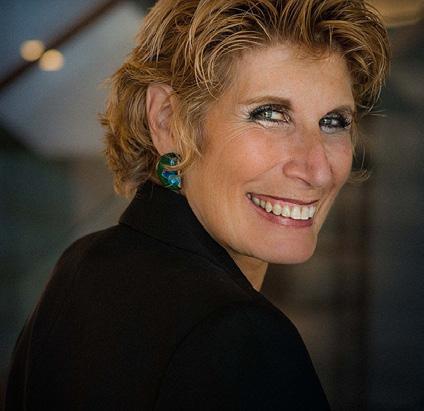










7 STRATEGIES FOR EMPOWERING WOMEN IN THE WORKFORCE - Bonnie Low-Kramen, Founder and CEO, Ultimate Assistant Training & Consulting Inc. MARCH 2023 • Vol. 40 • No. 03 (ISSN 2562-0711) Themed Edition on Empowering Women in the Workforce


7 Strategies For Empowering Women In The Workforce Support and empower women to build a strong, sustainable, and profitable workplace - Bonnie Low-Kramen, Founder and CEO, Ultimate Assistant Training & Consulting 06 INDEX On the Cover Articles 20 Let’s Relieve Women From Work From Home Guilt Maintaining boundaries between work and home - Melissa Romo, VP of Global Customer Marketing, Sage 25 14 Ways To Champion Women In The Workplace From challenging the status quo to sharing the spotlight, the list continues - Brett Farmiloe, CEO and CHRO, Terkel.io Leadership Excellence MARCH 2023 Vol.40 No.03 (ISSN 2562-0711) 36 How The PUMP Act Is Paving The Way For An Inclusive Workplace For New Mothers True organizational change must come from within - Stephanie Boms, CEO and Della Leapman, COO, Nessel 39 Helping Women To Close The Influence Gap Getting your voice heard as a female leader - Carla Miller, Women's Leadership Coach, Impact Consulting Ltd. Why Gender Equity Is A Must-Have: Insights from Women Leaders on International Women’s Day 2023 12 Themed Edition on Empowering Women in the Workforce
To Empower Women At Work, You Need To Address These Core Issues
The solution starts at the top
- Carol Schultz, Founder and CEO, Vertical Elevation
5 Ways To Encourage Women To Move Into Leadership


Ideas to shift the leadership mentality in your organization
- Dr. Lisa Aldisert, President, Pharos Alliance Inc.
Inclusivity In The Workplace For Women Of Color

Cultivate a culture of inclusive sponsorship
- Jhaymee Tynan, Principal, Healthcare Services, Korn Ferry
18 22 33
Establishing Mentorship Programs For Women And Minorities
How mentoring can help retain women and other minorities in their respective professions - Natasha Cortes, Partner, Grossman Roth Yaffa Cohen

INDEX Top Picks 09
Editorial Purpose
Our mission is to promote personal and professional development based on constructive values, sound ethics, and timeless principles.
Excellence Publications
Debbie McGrath CEO, HR.com - Publisher
Sue Kelley Director (Product, Marketing, and Research)
Babitha Balakrishnan and Deepa Damodaran Excellence Publications Managers and Editors
Leadership Excellence Team
Babitha Balakrishnan Editor
Arun Kumar R Design and Layout (Digital Magazine) Vibha Kini Magazine (Online Version)
Submissions & Correspondence
Please send any correspondence, articles, letters to the editor, and requests to reprint, republish, or excerpt articles to ePubEditors@hr.com
For customer service, or information on products and services, call 1-877-472-6648
Debbie Mcgrath Publisher, HR.com
#EmbraceEquity:
Babitha Balakrishnan Editor, Leadership Excellence

Insights on Empowering Women in the Workplace

In2023, we are still talking about gender equality. We definitely have achieved much on the path to gender equality, but we have a long way to go to ensure equal opportunities. However, are equal opportunities alone enough? As per the IWD, “true inclusion and belonging require equitable action. Equality is the goal, and equity is the means to get there. Through the process of equity, we can reach equality.”
Women are trying to succeed in a working culture designed for men, by men, and as a result, only one in five women feel a strong sense of belonging in the workplace. If women are to be empowered in the workplace of 2023 and beyond, it will require men to be respectfully aware of their challenges and to see the real value in supporting women to be empowered to rise through the ranks.
How can leaders support women at work and positively impact their career success? HR.com reached out to a few women leaders who shared their valuable insights on this topic.
Bonnie Low-Kramen's (CEO of Ultimate Assistant Training & Consulting) article, 7 Strategies For Empowering Women In The Workforce, shares tips for building a strong, sustainable, and profitable workplace with a constant flow of female talent in the pipeline.
In her article, To Empower Women At Work, You Need To Address These Core Issues, Carol Schultz (Founder and CEO, Vertical Elevation) talks about the relevance of placing more women in leadership positions and creating a culture with a woman’s point of view in mind.
Do your female employees see themselves as leaders? Some women feel that their bosses won’t “let” them be leaders; others, frankly, haven’t really thought about it. Dr. Lisa Aldisert (President, Pharos Alliance Inc.) in her article, 5 Ways To Encourage Women To Move Into Leadership, shares a few conversation starters to help the women in your organization embrace leadership.
How can leaders best prepare their organization for a culture of sponsorship? Jhaymee Tynan's (Korn Ferry) article, Inclusivity In The Workplace For Women Of Color, outlines six ways to cultivate a culture of inclusive sponsorship.
Empowering women in the workplace is not only the right thing to do, it’s the key to unlocking the full potential of our workforce and constructing a better, more innovative future together. On this International Women's Day, let's all step forward and commit to #EmbraceEquity. Let's actively challenge gender stereotypes, combat discrimination, raise awareness of biases, and strive for greater inclusion
We hope you find this edition’s expert articles on women's leadership informative and insightful. As always, we look forward to your valuable suggestions and feedback on our ePublications.
Happy Reading!
The views, information, or opinions expressed in the Excellence ePublications are solely those of the authors and do not necessarily represent those of HR.com and its employees. Under no circumstances shall HR.com or its partners or affiliates be responsible or liable for any indirect or incidental damages arising out of these opinions and content.
Disclaimer:
EDITOR’S NOTE
Subscribe now for $99 / year And get this magazine delivered to your inbox every month Become a Member Today to get it FREE! SIGN UP OR For Advertising Opportunities, email: sales@hr.com Copyright © 2023 HR.com. No part of this publication may be reproduced or transmitted in any form without written permission from the publisher. Quotations must be credited.
Excellence (ISSN 2562-0711) is published monthly by HR.com Limited, 56 Malone Road, Jacksons Point,
L0E 1L0 Internet Address
to the Editor at ePubEditors@hr.com
Leadership
Ontario
: www.hr.com Write
In a world of unparalleled challenges (global pandemic, racial injustice, political rivalry, digital 4.0, emotional malaise), uncertainty reigns. Finding opportunity in this context requires harnessing uncertainty and harnessing starts with reliable, valid, timely, and useful information. The Excellence publications are a superb source of such information. The authors provide insights with impact that will guide thought and action.
Dave Ulrich

Excellence publications are my ‘go-to’ resource for contemporary and actionable information to improve leadership, engagement, results, and retention. Each edition offers rich and diverse perspectives for improving the employee experience and the workplace in general.




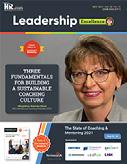 Julie Winkle Giulioni
Julie Winkle Giulioni


I regularly read and contribute to Leadership Excellence and Talent Management Excellence. I use many of the articles I read to augment my own presentations and I often share the articles with my clients. They are always quick, right on target for the latest issues in my field, and appreciated by my clients. If you want to stay up to date on the latest HR trends, choose a few of the different issues from the Excellence series of publications.

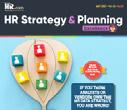


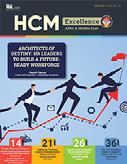
We’re eager to hear your feedback on our magazines. Let us know your thoughts at ePubEditors@hr.com

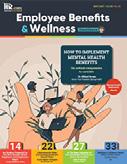
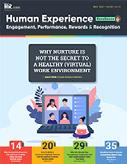 Rensis Likert Professor, Ross School of Business, University of MichiganPartner, The RBL Group
Rensis Likert Professor, Ross School of Business, University of MichiganPartner, The RBL Group
WHY EXCELLENCE PUBLICATIONS?
Author, Virtual /Live Keynote Presenter, Inc.’s Top 100 Leadership Speakers
Dr. Beverly Kaye CEO, BevKaye&Co.
7 Strategies For Empowering Women In The Workforce
Support and empower women to build a strong, sustainable, and profitable workplace
By Bonnie Low-Kramen, Ultimate Assistant Training & Consulting
“The 2020s has to be the decade of us sitting down and saying what we are going to do to harness the power of women. I look at the statistics. Seventy percent of high school valedictorians are women. More than 50 percent of college graduates are women. Then I find that only 7 percent of CEOs are women and only 2 percent of VC (venture capital) money is going to women. Talk about emerging markets! One of the biggest emerging market opportunities we have in the U.S. is women.”
Doesn’t the workplace of 2023 feel different from any workplace we have ever known? This reality is especially true for women who are struggling to stay visible in the new world of remote work and to be paid fairly in the fragmented givens of the day-to-day.
While a majority of women prefer working remotely, it is important to pay attention to the potential challenges. Consider that according to the US Bureau of Labor Statistics, 49.3% of women are working from home, at least part of the time, compared to 35.5% of men. Because of this, men are experiencing an
advantage simply because of their “proximity” to the leaders making decisions in real-time, in person. It is called “proximity bias.”
Given the current landscape, we need to be clear-eyed about how to empower the women in our workplace. Here are 7 strategies that work.
Leadership Excellence presented by HR.com MARCH 2023 6 Submit Your Articles
COVER ARTICLE
- Indra Nooyi, former CEO of PepsiCo
1. Hiring and Firing
The news is filled with stories of companies, especially in high tech, laying off staff. Women know that layoffs may need to happen, but the experience should not be traumatizing and dehumanizing. Company leaders can empower women, even on a layoff, by giving some advance notice, being told the news by a person and not via a text message or email, being given severance pay, and being offered support to find new work.
2. Create a Virtual WaterCooler
Since one of the downsides of remote work is not having those spontaneous “water-cooler” chats, it has become popular to design online opportunities for casual yet meaningful team-building connections. Doing this requires intentionality on the part of leaders and staff.
3. Who’s Got You and Who Gets You?
A risk factor for women working from home is feeling isolated and lonely, and as a result, depression and anxiety can set in. Company-sponsored mentoring programs are a great way to build your network and to keep learning and growing in constant motion. Mentors are key in identifying high producers for promotions and special projects. The most effective mentoring programs are ones where the mentee has some autonomy in selecting her mentor.
4. Blue Sky Thinking Group Sessions
These online meetings are fun and can feature food as the team
focuses on long-term goals. Peers and leaders can ask questions like, “What would you like to learn in the coming year?” and “What project are you excited to do?” and “What do you need to achieve your goals?” Since women are not socialized to overtly tout and celebrate their ambitions, these discussions can lead to identifying unexpected candidates for the pipeline of talent in companies.
5. Men as Strong Allies for Women
If women are to be empowered in the workplace of 2023 and beyond, it will require men to be respectfully aware of their challenges and to see the real value in supporting women to be empowered to rise through the ranks. Allies are the people who fully understand womens’ value and enthusiastically support them, even when the women are not present.
What does allyship look like?
It may mean women being supported to receive additional professional development training and advocating for a higher (and fairer) salary. It can also be seen in meetings where men are intentional about seeking input and opinions from women. And it can mean not interrupting women when they are speaking and speaking up when it happens. “Beth, can you finish that point you started to make earlier about XYZ. It was very interesting.”
Allies and mentors are especially important for women of color who are too often marginalized, misunderstood, underestimated –and undervalued.
6. Women as Strong Allies for Other Women
The companies with the highest employee retention are the ones where women are not made to feel guilty about their childcare responsibilities, by their leaders and by their colleagues. Women who can share honestly and openly about their family commitments have the highest morale and as a result, are motivated and empowered to be the highest producers. The most in-touch colleagues are now saying things like, “We know you need to take your child to the doctor or attend the school play. We trust you to do your work and just expect that you keep the team in the loop about the status of things.”
7. The Wage Gap is Real and Complicated for Women
In 2023, the burden falls on women to document and justify their value to be paid the money they deserve. On the heels of the Great Resignation and three years of upheaval in job descriptions and titles, issues around money and compensation are more complicated than ever. Despite 2022 being dubbed The Year of the Employee, implying that staff had the upper hand over leaders, this also meant that women had to be overt about self-advocating, which is not something that comes easily for most women. In today’s landscape, it still means women working hard to stay seen, heard, and respected for the work they are doing.
Leadership Excellence presented by HR.com MARCH 2023 7 Submit Your Articles 7 Strategies For Empowering Women In The Workforce
Self-advocacy means, creating a current, detailed, and fact-based job description to accompany a written business case matching responsibilities to compensation. This documentation ideally leads to a candid conversation about how a woman’s work is viewed and valued in their company. Women need to ask for a “pay evaluation” from HR and a transparent understanding
of their financial future at the organization.
What was true about women pre-pandemic, is truer now. Due to deeply rooted socialization, women do not find it easy to toot their own horns, highlight their hard work and achievements, or negotiate for higher salaries. It is hard enough for women to do these things in person and it is
even harder to do them remotely on video calls. If being seen on webcam is not required, then the invisibility factor is exacerbated.
The smartest leaders understand that to support and empower women to lean into their skills and ambitions is to build a strong, sustainable, and profitable workplace with a constant flow of female talent in the pipeline. The future depends on it.

Bonnie Low-Kramen strives to bring the voice of the staff to the forefront to create an ultimate new workplace. She is the founder and CEO of Ultimate Assistant Training & Consulting, a curated training solution for corporate leaders and assistants creating synchronous and thriving work environments. For twenty-five years, Bonnie worked as the personal assistant to Oscar-winner Olympia Dukakis and cofounded New York Celebrity Assistants (NYCA). A sought-after author and speaker on various workplace issues, Bonnie has served as a consultant on workplace bullying for the World Administrators Alliance and has worked in fourteen countries. She is a recipient of the Impact Award from the Boston Executive Assistants Organization and a TEDx speaker. She is also the author of Staff Matters: People-Focused Solutions for the Ultimate New Workplace.
Would you like to comment?

Leadership Excellence presented by HR.com MARCH 2023 8 Submit Your Articles
7 Strategies For Empowering Women In The Workforce
To Empower Women At Work, You Need To Address These Core Issues
The solution starts at the top
By Carol Schultz, Vertical Elevation
Mansplaining, ageism, lookism. These are just three ways women are discriminated against in the workplace. The solution starts at the top.
Early in my career, I attended an all-hands meeting with 20 other people—four of them women, besides me. It was my first meeting with the executive team, including the president of the company.
He asked everyone for suggestions (for exactly what escapes me). But what I do remember is having something to say. I hesitated, then decided to speak up. I told the group my idea. In response, the president made a dismissive, condescending comment and proceeded to move forward.
His reaction made me question myself. Was my idea stupid? I remember wondering. After that incident, I never opened my mouth in another group meeting with him.
I didn’t know at the time, but my suggestion wasn’t stupid. Instead, this was a case of mansplaining: when a man explains something to a woman in a superior or patronizing manner.
Mansplaining is just one workplace issue that’s often ignored. Ageism and lookism—discrimination based on age or looks—are two more that disempower women in every industry.
It’s no secret that women in most companies suffer from these issues, yet we gloss over them and simply hope that men at work will “turn a new leaf.” But hope isn’t an effective strategy.
Yes, it’s a daunting task to inspire men to change, to make them aware, and get them to care enough to do the work to be better. Yet I know where we can start: at the top.
The Core Issues
Mansplaining takes many different forms. There’s the classic example: A man explains a woman’s job to her, thinking he knows more than she does about a job he’s never had. But it can also be a manager not acknowledging an issue brought by a female employee. Or a woman’s higher-up not giving her credit for her work in completing a successful project.
Leadership Excellence presented by HR.com MARCH 2023 9 Submit Your Articles
TOP PICK
A recent research study by Caitlin Q. Briggs, Danielle Gardner, and Ann Marie Ryan reveals how women are affected by mansplaining. It can cause a woman to question herself, devalue herself, and stop giving input. Eventually, it fuels job dissatisfaction.
Another common issue is ageism: discriminating based on someone’s age. According to the U.S. Census Bureau’s Quarterly Workforce Indicators, female workers aged 35–44 earned 30% less than men, and that gap in pay increased with age.
But ageism isn’t just a pay gap. It can be a company that hires a younger, less-qualified candidate rather than an older, highly qualified candidate. It can be the pressure a company puts on an older employee to retire. According to an AARP survey, close to 80% of
older workers say they’ve seen or experienced age discrimination in the workplace.
Then there’s lookism, the discrimination of someone based on appearance and attractiveness. As you can imagine, this is a very real problem in workplaces that affects not only women but everyone. It can mean a more attractive-looking woman getting the job over a less-attractive one. Or one worker garnering more attention and guidance than another based on looks.
Case in point: When’s the last time you saw an average-looking or older woman delivering the news?
Addressing the Root Causes
There are many causes of workplace discrimination. Here are a few that, if addressed, will start to remedy problems for the women in your workforce.

Leadership Excellence presented by HR.com MARCH 2023 10 Submit Your Articles To Empower Women At Work, You Need To Address These Core Issues
Leadership Misalignment
Fixing the issues that disempower women starts at the top. Your organization’s entire leadership team must be aligned on its vision, goals, culture, business strategy, and talent strategy.

If your team is aligned on its talent strategy—how the company is going to find and retain the best people— you’ll determine how candidates treat women before they even set foot in your door.
One way to accomplish this is through psychometric profiling during the hiring process. Asking the candidate to take the personality assessment will help you better understand how their mind works, and how they treat others.
To ensure the information is accurate, seek blind references. A blind reference is one not provided by the candidate. Talk to a past peer who was a woman; this usually indicates the person’s future behavior.
Lack of Gender Diversity
Let’s be honest if the CEO of a company is mansplaining, how likely is it that no one else in the company does? Not likely. They’re only following his example.
Creating a diverse team, especially at the top, will set a better example and empower the women in your workforce. Keep in mind, diversity doesn’t only refer to race. It includes gender, age, and background.
Is your C-suite all men and one woman? Are your managers men? Are your female workers younger or older? Giving women a seat at the table will ensure their voices are heard. It will also influence your company culture, setting the tone for employees’ day-to-day interactions.
Ineffective Communication
Do your male employees know what mansplaining is? Or ageism? As a leader, you must continuously educate yourself on these issues and adjust how you lead accordingly. In doing so, communication will always play a pivotal role.
Communicating effectively refers to more than using big words and practicing good email etiquette. It means the ability to relay a message accurately and listen attentively to feedback and concerns. This must be done with intention. Through training and coaching in effective communication, you and your team will become aware of the issues that are dragging your female workers down—and how to address them.
Moving Forward
If you’ve read this far, you’ve got more than hope; you have the tools to make changes. Empower the women in your workforce by employing talent that doesn’t actively disempower them. Place more women in positions of leadership. Create a culture with a woman’s point of view in mind and communicate these policies effectively. Women will thank you for it.
Would you like to comment?
Leadership Excellence presented by HR.com MARCH 2023 11 Submit Your Articles
To Empower Women At Work, You Need To Address These Core Issues
Carol Schultz is the Founder and CEO of Vertical Elevation, a talent equity and leadership coaching and advisory expert with 30 years in the business. She’s helped hundreds of companies transform their organizations and create sustainable, talent-centric cultures that run at maximum efficiency. She’s the author of the Amazon bestseller Powered By People: How Talent-Centric Organizations Master Recruitment, Retention, and Revenue (and How to Build One).
Why Gender Equity Is A
Must-Have
Insights from Women Leaders on International Women’s Day 2023
Equity isn’t just a nice-to-have; it’s a must-have. How are we really doing today when it comes to gender equity?
The International Women’s Day 2023 (IWD 2023) campaign theme #EmbraceEquity aims at getting the world talking about “Why equal opportunities aren’t enough.” Aligning with this year’s theme, HR.com reached out to women leaders to hear their take on why gender equity needs to be part of every society’s DNA.

Achieving Inclusion and Belonging for Women in the Workplace

“What ‘equal opportunities’ fail to offer is ‘equal inclusion and belonging.’ We now know that simply providing opportunities for women to perform and advance does not take into account the social and organizational experience of womanhood in the workplace. Women’s place in society is not treated as equal to men’s. Therefore, giving equal opportunities for women as men do not address the unique challenges women face in taking those opportunities.”
Eileen Linnabery, Practice Leader, New Products for Client Success at Vantage Leadership Consulting

Start with Shifting Mindsets and Undoing Systemic Inequities
“While noble in concept, equality requires that we will act without bias and assumes that we don’t have structural and cultural issues to overcome. The focus on equality has not closed the gap for women. With equity as the goal, we first need to start with shifting mindsets and undoing systemic inequities that exist in organizations.
Leaders can then make conscious decisions on the financial and human investments various under-represented individuals need and help them deliberately advance in organizations by curating their experience and tapping into a broad set of successful strategies such as sponsorships, coaching, leadership development, networking, etc.”
Leadership Excellence presented by HR.com MARCH 2023 13 Submit Your Articles Why Gender Equity is a Must-Have: Insights from Women Leaders on International Women’s Day 2023
Shaara Roman, author of The Conscious Workplace: Fortify Your Culture to Thrive in Any Crisis, and the founder and CEO of The Silverene Group
The Importance of Women Supporting Women in Achieving Equity
“Women supporting and advocating for other women is one way of achieving equity. We have a responsibility as women to negotiate not only for what we are worth, not only to uphold the highest standards, not only for ourselves but also, to pave the way for other women to succeed after us. Working together as a unified force strengthens our resolve and brings us closer to winning the equity struggle.”
Beth Fisher-Yoshida, Ph.D. CCS is a global expert and educator in intercultural negotiation and communication. Her new book, New Story, New Power: A Woman’s Guide to Negotiation helps women of all ages make successful negotiations a reality.

Achieving Gender Equity Through Equal Parental Legitimacy
“I believe that equity in the workplace stems from equality within the family. Both partners need to be met with equal parental legitimacy. When women are continually expected to remain the primary caregivers, it impinges on how much they are able to achieve in the workplace, even with equal opportunity for career advancement. When men are seen as legitimate and equal caregivers, women will be able to reach beyond the limitations they face towards equality in the workforce. As employers, our role is to build a workplace that enables freedom of choice without gender-based guilt for men and women alike.”
Naama Engal, VP of Global HR, Bookaway Group

Leadership Excellence presented by HR.com MARCH 2023 14 Submit Your Articles Why Gender Equity is a Must-Have: Insights from Women Leaders on International Women’s Day 2023
Addressing Bias in Male-Dominated Industries to Achieve Gender Equity
“Policy focused on reaching equal opportunity for women is an outdated goalpost. If women are to lead at the same rate as men, we have to address the inherent bias in male-dominated industries. We can raise our daughters to be leaders and educate young women about the heavily socialized norms that may create false limits in their minds, but to what end? Environments that adversely affect women at different stages of their lives must first change. Women today are still faced with the horrific proposition of choosing between career and family and that is, I believe, the biggest evidence of a lack of equity in our society. Organizations and society must be held accountable for the lack of awareness and initiatives that support and propel women to have a true chance to pursue the same level of happiness as their male counterparts.”
Laura Dribin, CEO & Founder, Peritius Consulting, Inc.

Supporting Moms in the Workplace
“We now have a wealth of data that makes it clear: Mothers carry a disproportionate amount of the invisible work in their homes. This cannot be remedied simply through equal opportunities; it must be tackled head-on with new, data-driven, imaginative solutions to help women return to, remain in and flourish in the workplace. Simply put, there is no such thing as a “working dad,” but only a “working mom.” And it’s beyond time to help support moms who work, just like we’ve supported dads who work.”
Jenna Worthen, author of Mom Who Works and Founder and Chief Curator for an online, global organization of the same name Would you like to comment?

Leadership Excellence presented by HR.com MARCH 2023 15 Submit Your Articles Why Gender Equity is a Must-Have: Insights from Women Leaders on International Women’s Day 2023
HRCI® & SHRM® CERTIFICATION PREP COURSES
GROUP RATES AVAILABLE
For HR Professionals
Show that management values the importance of the HR function, and has a commitment to development and improvement of HR staff.
Ensure that each person in your HR department has a standard and consistent understanding of policies, procedures, and regulations.
Place your HR team in a certification program as a rewarding team building achievement.
For Your Organization
Certified HR professionals help companies avoid risk by understanding compliance, laws, and regulations to properly manage your workforce.
HR Professionals lead employee engagement and development programs saving the company money through lower turnover and greater productivity and engagement.
A skilled HR professional can track important KPIs for the organization to make a major impact on strategic decisions and objectives, including: succession planning, staffing, and forecasting.
HR.com/prepcourse CALL TODAY TO FIND OUT MORE 1.877.472.6648 ext. 3 | sales@hr.com
1 Less expensive than a masters or PhD program, and very manageable to prepare with
2. legislation and best practices
3. Recognized, Industry benchmark, held by 500,000+ HR Professionals
Group Rate Options
We offer group rates for teams of 5+ or more for our regularly scheduled PHR/SPHR/ SHRM or aPHR courses.
For groups of 12+, we can design a more customized experience that meets your overall length of the course.
Groups rates for HRCI exams are also available as an add-on.
All group purchases come with 1 year of HR Prime membership for each attendee to gain the tools and updates needed to stay informed and compliant

CALL TODAY TO FIND OUT MORE 1.877.472.6648 ext. 3 | sales@hr.com | HR.com/prepcourse
1 2 3
5 Ways To Encourage Women To Move Into Leadership
Ideas to shift the leadership mentality in your organization
By Dr. Lisa Aldisert, Pharos Alliance Inc.
Hereis a question for managers in the workplace: Do your women employees see themselves as leaders? I’ve surveyed many groups with this question and at best I receive a lukewarm positive response. Some of these women think their jobs aren’t big or important enough; others feel like they have no significant voice. Some women feel that their bosses won’t “let” them be leaders; others, frankly, haven’t really thought about it.
Even though we’ve made noteworthy strides in the number of women leading, gender biases still exist and need to be overcome so that women in leadership is a regular topic of thought. It’s time to transcend arcane images of leaders and help the women on your team move forward energetically to claim places on the leadership spectrum. I invite you to use the principles below as conversation starters to help the women in your organization embrace leadership.
Principle #1: Leaderships is a mindset. If you are in a position where you influence outcomes, you are a leader. It all starts in your mind and has little to do with what your specific job entails. There is an axiom followed by many who want to improve their positions, and that is, “act as if.” Think in terms of already being in an influencer role and you will begin to attract different behavior from others. All
employees on your team can begin to embrace the leadership mindset.
Principle #2: Leadership is not related to title or position. After getting comfortable with leadership as a mindset, the next step is to act. Look around you and you’ll see examples of this everywhere. The person who serves your morning coffee knows your order and places it when she sees you walk into the restaurant is a leader. The receptionist at your yoga studio who helps you quietly slip into the studio when class has already started is demonstrating leadership. Encourage the women on your team to find the situations where they can act as a leader.
Principle #3. Good managers facilitate the development of future leaders. Managers, you’re in the position to recognize talent. Think about what could happen if you actually do something about this even if your supervisor isn’t asking you to do so. It can be as simple as acknowledging something that an employee does; for example, “Jennifer, it was great how you stepped up when we were putting together the prospect presentation package.” You can assign different work when the employee demonstrates unexpected initiative. Or you can ask another employee to mentor an employee who demonstrates potential. Be proactive about identifying initiative and observing how consistently you see this from these employees.
Leadership Excellence presented by HR.com MARCH 2023 18 Submit Your Articles
TOP PICK
Principle #4. Open their eyes to what’s possible. Simply put, many women never think about reaching the leadership direction. They don’t know it’s available to them. They don’t recognize their own talents. They don’t think it’s possible. They don’t think they’re eligible. You can make a meaningful difference by shifting their awareness of what is possible. Even though these actions may not result immediately in promotions, you’ll find that people walk a little taller and more confidently if they’ve been singled out as someone with potential.
Principle #5. Be a role model and work on yourself. What are you doing to advance yourself? If you’re contributing to women’s leadership by showing what’s possible, take it a giant step further by enhancing your own leadership potential. After all, if it takes one to know one, let’s start at the source (you) and seek out development opportunities for yourself as well. Perhaps you can take a class, such as goal setting, delivering feedback in difficult situations or developing financial acumen. By investing in learning, you’ll not only become a better manager, but you’ll also encourage the women on your team to develop their skills as well.
None of this is rocket science, but each of these principles starts with recognizing something that may be different than what is being practiced or perceived
in your organization, then taking the time to break through old images and stereotypes. Change can happen when you take the first step to lead the way.
Everyone can be a leader, and your ability to spark interest and initiative in the women who work for you will create results you never even considered. My prediction is that your team will get stronger, your women will feel more empowered, and there may even be a promotion around the corner for you sooner than you expected.

Dr. Lisa M. Aldisert is an NYC-based business advisor, trend expert, speaker and author. She is the President of Pharos Alliance Inc. , an executive advisory firm specializing in strategic planning, organizational development, and leadership development.
Would you like to comment?

Leadership Excellence presented by HR.com MARCH 2023 19 Submit Your Articles 5 Ways To Encourage Women To Move Into Leadership
Let’s Relieve Women From Work From Home Guilt
Maintaining boundaries between work and home
By Melissa Romo, Sage
I’ma female executive leading a large multi-country team for an international company. I’ve worked remotely for this company since 2017 because they don’t have an office in the city where I live. Being at home for more than six years, I’m experienced in remote work, long before Covid. Many women want what I have and are getting it: according to McKinsey’s 2022 Women in the Workforce report, nine out of ten women prefer working remotely. But being the one at home carried gender baggage before Covid, and
that hasn’t stopped. In the early months of the pandemic, a 2020 McKinsey study found that 79% of men felt positive about remote work while only 37% of women could say the same. Does that mean that women are preferring something that they actually feel negative about? We urgently need to understand that contradiction; it’s a flare in the night sky of female empowerment.

From my own experience, the reasons women struggle with
flexible, home-based work more than men are not obvious. My husband is an incredibly supportive spouse, as involved or more than I am in household duties. He works five days a week in his company’s office in our city. We have taught our two sons all the basics of housework— running the dishwasher, handling laundry, even some cooking and food shopping basics. So why is it, when dinnertime arrives and I haven’t had a chance to even stand up from my desk after a crammed day of Teams calls, that an alarm bell goes off inside me: I’ve been here all day and I haven’t made any dinner.
The spouse at home, more often than not the female, is presumed to be able to “cover off” all kinds of domestic tasks in between meetings and presentations. This presumption doesn’t even have to come from the office-based spouse. In my case, the drive to “cover off” the home front comes from a deeply entrenched set of
Leadership Excellence presented by HR.com MARCH 2023 20 Submit Your Articles
internal gender codes that no amount of feminist reform can overwrite. Most of the women in my family, especially my grandmothers, were consummate homemakers. Every time I fail to iron a set of sheets, I feel I am falling short of my grandmother’s legacy for me. The list of domestic tasks I don’t do in favor of focusing on a career is a long one. But being at home all day, turning away from those tasks somehow feels especially egregious.
My solution has been to buy my own membership in a co-working space, to remove myself from the scene of the crime in a matter of speaking. When I met someone on my first day there, I glibly joked that I was hiding from housewifery. He laughed and then seemed on the verge of offering an apology. I said I didn’t want my kids to be able to find me. Also awkward. But mainly, if I weren’t at home, the at-home tasks would understandably not be tended to.
My inner granddaughter could hardly be expected to handle laundry in between conference calls if she were miles from the laundry room.
When I was interviewing remote workers for my book, Your Resource Is Human: How empathetic leadership can help remote teams rise above, one of the most memorable conversations I had was with a father who was at home during Covid while his wife brought their second child into the world. With a toddler and a newborn, it didn’t take this father long to observe that his wife more than had her hands full. He started to help out in between his conference calls, but the helping out overtook him. The children were at that very young age where they need everything done for them, and his sense of obligation to his young family at home collided with his ethic for work, and he couldn’t
win. He told me recently that he decided to resign. Burnout won.
For a remote worker, especially a female head of a household, the ability create and maintain boundaries is akin to suiting up an astronaut in a spacesuit. She must have that suit to survive. Too many women can’t establish boundaries, fighting their own inner drives. This has and continues to be one of the things I struggle with the most. On days when I can take myself away from home, finding some office substitute, I feel excused from the housework. On days when I can’t, I have no excuse.
We need leaders and companies to skill remote workers, especially women, in creating and maintaining boundaries between work and home. We need to help them carve out schedules and routines that alleviate them from feeling that they need to fill two roles at the same time. This is a conversation that needs to have a space in employee engagement teams. We need nothing short of an intervention to empower women with work flexibility that is actually sustainable and, dare we say, even fulfilling.
Melissa Romo earned an MBA from the Yale School of Management, where she studied organizational behavior and leadership. She is a regular speaker for events around the world, including the Digital Marketing World Forum, Generation Success Breaking Barriers, and the B2B Marketing Podcast, and has been recognized as a global advertising and marketing “40 Over 40”, “Inspirational Woman of the Year”, and “Inclusive Leader”
Would

Leadership Excellence presented by HR.com MARCH 2023 21 Submit Your Articles Let’s Relieve Women From Work From Home Guilt
you like to comment?
Too many women can’t establish boundaries, fighting their own inner drives. This has and continues to be one of the things I struggle with the most.
Inclusivity In The Workplace For Women Of Color
Cultivate a culture of inclusive sponsorship
By Jhaymee Tynan, Korn Ferry
Color In The Workplace, I list six ways to start building this foundation within your organization. One thing to note before you start – your senior leadership must believe that creating a pipeline of diverse talent is their responsibility, and that sponsorship is the way diversity can grow and thrive within the company.
1. Making Inclusive Sponsorship a Core Leadership, and Company Competency
Creating a sponsorship culture relies on a strong leadership team. Strong leadership requires courage, intentionality, and a willingness to do what’s right for employees and what is right for the organization. This also includes thoughtfulness in selecting executives as active sponsors for rising diverse talent.
How can leaders best prepare their organization for a culture of sponsorship? In my new book, INCLUSIVE SPONSORSHIP: A Bold Vision To Advance Women Of
Inclusive sponsorship should be introduced at all levels of the organization, giving employees optimal time to practice these behaviors, including building relationships. Building relationships among coworkers and managers has been proven to help create a positive work environment. Having a positive work environment directly contributes to improving the psychological safety and well-being of your diverse employees. As a leader, I’ve made it a point to block out time in my calendar to connect with diverse team members, as well as encourage other teammates to do the same.
2. Self-Education on Diversity, Equity, and Inclusion
If you want to be able to sponsor diverse women, you must understand their experiences. While you can learn about these experiences by developing a close relationship with your sponsee, you should push yourself as a sponsor to go one step further.

Leadership Excellence presented by HR.com MARCH 2023 22 Submit Your Articles
TOP PICK
There is an abundance of information about the unique challenges women of color face in the workplace. Leaders should equip themselves with this knowledge, supplement it with real-life testimonies from diverse women, and actively listen. Your role as a leader is not to debate or offer a counter-opinion. You may not fully relate to their stories, but not shying from the conversation shows your genuine commitment to inclusive sponsorship. Self-education equips you with the data and the language to be effective in your advocacy.
3. Moving Your Organization From Mentorship to Inclusive Sponsorship
There is an abundance of mentorship programs available for high-potential employees. The intentions behind these programs are good at their core. Matching employees with leaders who can guide them through their careers is a great way to increase employee engagement and build relationships within your company.
However, a few problems arise when launching only mentorship programs.
First is the “so-what” factor. An employee will participate and receive a few months of guidance from a senior leader, but once this program is over, the employee feels confused on their next steps, both in the relationship and for their career.
Second, mentorship is a low-risk activity for the mentor. There is no expectation beyond simply coaching the mentee. Often, there is no true outcome around advancing the employee in her career.
Sponsorship takes a different approach. It is a higher risk, higher reward behavior. The sponsor must act because there is that thread of accountability in sponsorship that is generally not present in mentorship.
Genuinely being a sponsor implies that there is an action and result that is tangible and impactful to the sponsee. Women of color are over-mentored and under-sponsored. They receive a plethora of coaching and advice, but they lack the action and advocacy needed.
Mentorship isn’t all bad, as it lays a great foundation for sponsorship to be built upon. I look at it as the first part of a trilogy, the three phases in everyone’s career journey.
● Part 1 is receiving coaching and advice as a rising leader (mentorship).
● Part 2 is obtaining the advocacy and support needed to advance (sponsorship).
● Part 3 is paying it back and creating the next generation of leadership.
Leadership Excellence presented by HR.com MARCH 2023 23 Submit Your Articles Inclusivity In The Workplace For Women Of Color
So, if you already have a mentorship program in place, how can you transform it into one inclusive sponsorship?
One way to accomplish this is by expanding your program and treating it as a graduation from mentorship. Once a solid foundational relationship has been built between a mentor and mentee, sponsorship comes naturally.
Imagine if every executive in your company decided to foster a relationship with their mentee and transition from being a mentor to a sponsor. It’s a small, but actionable way for leaders to have a direct impact on the careers of an employee they already have a relationship with.
4. Telling Stories About Inclusive Sponsorship Success
Stories related to sponsorship are lacking. When people hear stories and can see the impact of sponsorship, it becomes tangible and inspirational, especially when you break down how easy it can be. To form and foster an environment of inclusive sponsorship, you must not only tell these stories but also celebrate and elevate them within your organization.
Showcasing these relationships makes them more accessible to others. It’s a great way to spotlight sponsees on the rise as well as the leaders and executives who are living your organization’s mission around talent development. These leaders will attract other diverse talent looking for advocacy and support. It can also act as an alternative for organizations that might be hesitant to include sponsorship as part of a leader’s performance evaluation.
Sharing stories of sponsorship across the company will have a ripple effect.
5. Become Active in Business Resource Groups (BRGs) to Identify Diverse Talent
I believe that to identify diverse talent, you must gain proximity to diverse talent.
A good sponsor has many ways of seeking diverse talent. BRGs have grown in popularity as a safe
space for employees with common backgrounds and interests to discuss topics relevant to them. Joining these BRGs, allows you to meet talented employees in other departments who you don’t typically interact with. I highly recommend businesses encourage senior leadership to attend events held by different BRGs.
If an opportunity arises for you to serve as an executive sponsor of a BRG, take that opportunity.
6. Encourage Attendance at Diversity Conferences
The final way to foster a culture of inclusive sponsorship is by encouraging executive leaders to attend diversity, equity, and inclusion conferences. These conferences open the door for executives to network and build relationships with diverse talent. Associations like the National Black MBA Association hold annual conferences on topics related to your specific industry as well as on how to find emerging talent.
Having your leadership team participate in the conferences is both an educational event for them and a way to understand trends impacting your industry and organization. You never know who could be sitting next to you at a conference and who is looking for their next job or sponsor.
Jhaymee Tynan is the author of INCLUSIVE SPONSORSHIP: A Bold Vision To Advance Women Of Color In The Workplace. She is an award-winning strategist, culture leader, and wellness champion. She is a board-certified healthcare strategy executive and thought leader known for her values of empathy and kindness in the workplace.
Would you like to comment?

Leadership Excellence presented by HR.com MARCH 2023 24 Submit Your Articles
Inclusivity In The Workplace For Women Of Color
14 Ways To Champion Women In The Workplace
From challenging the status quo to sharing the spotlight, the list continues
By Brett Farmiloe, Terkel.io
Fromchallenging the status quo to engaging in allyship, here are 14 answers to the question, “What is your best tip for other leaders to amplify the voices of and support women at work?”
● Challenge the Status Quo
● Invest in a Continuous, Inclusive Dialogue With Diverse Groups of Women
● Appoint a Diverse Group of Women into Leadership Roles
● Share the Spotlight
● Be a Role Model So Your Team Knows It’s Important to You
● Expand Your R.E.A.C.H
● Audit Your Gender Pay Gaps and Pay Women Equitably
● Offer Flexible Work Arrangements
● Support Women’s Intersectionality Through Data-Driven Decisions
● Celebrate Wins Loudly & Publicly, Give Proper Credit
● Foster an Atmosphere in Which Every Member Can Thrive
● Undo The Socialized Notion That Masculine Leadership is Best
● Listen, Learn, Unlearn, and Relearn from Women at Work
● Actively Engage in Allyship
Jennifer C Sarrett, Founder, Director, Disruptive Inclusion

Challenge the Status Quo
Many of the valued behaviors in the workplace are typically associated with maleness-aggression, forthrightness, and confidence. However, when women express these same traits, they are less valued.
The way to amplify women’s voices is to question the status quo on the behaviors we typically see as necessary to being an effective leader and teammate. Women are more likely to listen, collaborate, be flexible, and consider a person’s lived experience. These traits are found to improve workplace culture, leading to better outcomes.
We need to shift to valuing these types of behaviors in the workplace, especially in our leaders. Doing so will help women throughout organizations feel more comfortable being themselves and more supported when speaking out.
Leadership Excellence presented by HR.com MARCH 2023 25 Submit Your Articles
Stéphanie Boisvert, Senior Consultant, Leadership and Organizational Development / Board Administrator, Independent Collaborator


Invest in a Continuous, Inclusive Dialogue With Diverse Groups of Women
What sets apart some of the most successful organizations are the concrete steps they take towards transitioning from viewing women as one homogeneous group to being open to a much richer, multifaceted reality. They understand the importance of investing in a continuous, inclusive dialogue with women living at the intersection of various social identities such as ethnic heritage, sexual orientation, age, parental/caregiver status, disability, etc., to understand the implications of both surface-level and invisible dimensions of DEI on desired goals and progress.
By capturing the critical nuances that may translate into strengths as well as obstacles in a particular context or work environment, leaders collectively multiply the potential to create truly meaningful experiences for all sustainably.
Martha Caldwell, EVP, DEILearning and Development Strategist, iChange Collaborative
Appoint a Diverse Group of Women into Leadership Roles

The fastest path to reaping the profoundly significant benefits of inclusion is to ensure that diverse groups of women are sitting at decision-making tables throughout your organization.
Moving women into leadership roles, particularly women of color, is a key business imperative. This means providing opportunities for women to develop their talents and chart their career paths-employee resource groups, mentorships, sponsorships, leadership coaching, and other professional development opportunities. It also means having a clear strategy for building a culture of inclusion, including an actionable commitment to eliminating microaggressions.
Microaggressions damage women’s health and are costly to organizations. Ensure that your workforce understands how to identify microaggressions, that the environment is psychologically safe enough to discuss them, and that people know strategies to counteract them.
Leadership Excellence presented by HR.com MARCH 2023 26 Submit Your Articles 14 Ways To Champion Women In The Workplace
Erica Colonero, Co-founder, VisionSpring, Inc.


Share the Spotlight
As a leader, you can support women at work and positively impact their career success by providing opportunities for them to shine and by giving them access to senior leadership. Look for opportunities to put your female leaders on high-visibility, stretch projects and talk positively about their accomplishments with your peers and with senior executives.
Consider opportunities to step aside so their voices can be heard. This could mean providing them an opportunity to present in front of leadership or providing a written update on a critical project. Ask them what support they need to be successful, and then thank them for a job well done.
Hattab, Consultant,
Be a Role Model So Your Team Knows It’s Important to You
Be honest with yourself. What are you already doing or what can you be doing as a leader? If your team knows that amplifying the voices of women is important to you, they’ll model that behavior.
Think in really practical terms: Who is setting the agenda or presenting in meetings? How does the approval or feedback process include women’s voices? Do you consider their input in candidate selection? Male voices often dominate; how are you creating spaces for those who aren’t as forthright to voice their opinions and ideas? Often it’s women’s voices that are able to battle through the noise, but can all voices among the women in your team be heard?
When you create spaces for all voices and leverage your leadership influence to evolve systems and processes with women’s voices at the forefront of your mind, you send a clear message to those working with and for you. The effect will be far wider than the practical change you make; it will initiate and support the cultural shift necessary for long-term change.
Leadership Excellence presented by HR.com MARCH 2023 27 Submit Your Articles 14 Ways To Champion Women In The Workplace
Nurit
DEI and Culture Change, NH Consulting
Renee Rosales, CEO/Founder, Theara LLC
Expand Your R.E.A.C.H
As we work toward creating more inclusive and equitable environments in the workplace, it is important to expand our reach toward women.
As a Neurodiversity Coach and Consultant, I utilize acronyms to embed important concepts into memory. The R.E.A.C.H. acronym is simple: Resilient, Embracing, Adaptable, Connected, and Humble. We can easily apply these principles by offering flexible work schedules, opportunities for mentorship, the implementation of specialized coaching and support, and by actively listening to the needs of women at work.

This kind of conscious effort to support and expand the power of the voices of women builds inclusivity in organizations and leverages the unique and diverse perspectives of all employees.
Jack Turnwald, Dei Consultant, Humancentric.work
Audit Your Gender Pay Gaps and Pay Women Equitably
“Championing women in the workplace”the phrase itself feels paternalistic when you give the power dynamics of it deeper thought. However, if we want to empower women in the workplace, it starts with a commitment to equitable pay.

In a society operating based on capitalist mechanisms, paying women appropriately for the labor they do - including substantial, unacknowledged emotional labor - changes the way they can move in the world. Aside from the fact that it’s simply the right thing to do, it provides psychological safety via financial stability, the ability to invest back in oneself through professional development and coaching, and access to the self-care that can help prevent burnout.
Completing an audit to examine pay across comparable roles by gender, committing to an actionable timeline for pay equity where there is not, and offering pay transparency can move an organization toward being an entity women can trust and within which they can expect to thrive.
Leadership Excellence presented by HR.com MARCH 2023 28 Submit Your Articles 14 Ways To Champion Women In The Workplace
Marie Roker-Jones, CEO, Curious Culture
Offer Flexible Work Arrangements
A great way to champion women in your workplace is to offer flexible work arrangements. Imagine being able to work from home when you need to care for a sick child or loved one, or being able to job-share or compress your workweek to have a long weekend with your family. These options empower women, regardless of their family status, to take control of their schedules and find the right balance to pursue their career goals.
The option to work from home, job-share, or have a compressed workweek can reduce the barriers women often face in the workplace, such as limited scheduling options, difficulty in finding childcare, and balancing family and caregiving responsibilities. Flexible work arrangements should be seen as an asset, not a hindrance, to the career advancement of women and should not affect opportunities for promotion.
Katlyn Ford, Independent Consultant

Support Women’s Intersectionality Through Data-Driven Decisions
If an organization wants to create positive change in the workplace, then it should begin by understanding and supporting women’s intersectionality through data-driven decisions.
One of the ways to do this is to have a budget provided by leadership to support the actionable change that will help them better understand the women working for them. Next, having tools, assessments, and training cannot support women to the fullest extent if there is no data to assess a starting point to see how far the change has come. This also helps assess what direction to focus the change on.
This is important because women in the workplace can define themselves, their individual roles, and who they are, differently based on their culture, heritage, religion, age, and much more. If the intersectionality of women in the workplace is not considered, how can we say we are fully supporting them?

Leadership Excellence presented by HR.com MARCH 2023 29 Submit Your Articles 14 Ways To Champion Women In The Workplace
Libby Mullen-Eaves, Head of People and Culture, BizLibrary

Celebrate Wins Loudly & Publicly, Give Proper Credit
Let it be an important part of your inclusive communication and branding strategies, internally and externally, to regularly post about women’s wins on your company intranet and social media platforms.
To amplify women’s voices and contributions in the workplace, we must celebrate women’s wins loudly by publicly highlighting accomplishments, outlining the detailed tasks, and stating the resulting specific, positive impacts for your organization, employees, and clients. Women’s names should be used and tagged to ensure proper credit is given for ideas and accomplishments.
Committing to consistently and publicly sharing women’s wins invites and amplifies the voices of women in the workplace, empowers women, and fosters a culture of inclusivity, providing a supportive work environment where women feel valued and engaged, strengthening the overall success of your organization.
 Nicole Brock, Chief Consultant, Embed Diversity
Nicole Brock, Chief Consultant, Embed Diversity

Foster an Atmosphere in Which Every Member Can Thrive
Empowering women in the workplace is not only the right thing to do; it’s the key to unlocking the full potential of our workforce and constructing a better, more innovative future together. The key to unlocking the full potential of our workforce and propelling growth, creativity, and prosperity for all is to foster an atmosphere in which every member can thrive.
Leadership Excellence presented by HR.com MARCH 2023 30 Submit Your Articles 14 Ways To Champion Women In The Workplace
Rhonda Moret, Founder/CEO, Elevated Diversity


Undo The Socialized Notion That Masculine Leadership is Best
The challenges women leaders face in the workplace are daunting, and the statistics are not in our favor. If you consider that women hold only 35% of management positions, but make up more than half of the workforce, the numbers are sobering.
We assume this disparity is attributed to the belief that traditionally masculine leadership traits, such as being competitive, aggressive, and confident, are essential to getting recognized and awarded top roles. So, does this mean that women must re-engineer their entire leadership style? In our opinion, the answer is no. We are seeing a shift that leans in our favor. Soft skills, such as empathy, humility, and EQ, more commonly associated with women, are now recognized as having value.
In our leadership development programs, we “undo” the socialized notion that masculine leadership should be embodied by all. Instead, we teach women to leverage traits most congruent and authentic to who they are, how they think, and how they want to lead.
Denise Branch, Anti-racism Educator/DEI Consultant, Anti-Racism School
Listen, Learn, Unlearn, and Relearn from Women at Work
To effectively amplify and support women in the workplace, leaders must first be willing to listen, learn, unlearn, and re-learn from women at work, which includes women of color.
Leaders don’t have to be unconscious misogynists or misogynoirists to unlearn them both. Leaders who are willing to become self-aware of what causes them to be ineffective in supporting and amplifying all women at work will be able to create more options and opportunities for diversity in women and the ideas, insights, and innovations they bring to the workplace.
Once leaders learn about the divergent needs of diverse women and have started their listening, learning, unlearning, and re-learning, women won’t have to become “men in heels” to be supported and amplified at work.
Leadership Excellence presented by HR.com MARCH 2023 31 Submit Your Articles
14 Ways To Champion Women In The Workplace
Actively Engage in Allyship
You can best support women at work by actively engaging in allyship. While you might be thinking of allyship as an identity, it’s more of a sector of action, such as co-creating strategic visions and letting her publicly own the work, avoiding delegating your work to a woman and pretending that you did it, speaking up when you see something’s wrong, and taking responsibility for your mistakes.


Allies also need to be critically reflective
and authentically curious about how they show up at work and how their behaviors impact the women around them. This is particularly true for women of color. While all women can benefit from allyship, a recent study from Catalyst highlights that it is particularly important for women who have darker skin and/or who identify as LGBTQ, as they are most likely to experience a combination of sexism and racism on the job with little to no allied support.

Leadership Excellence presented by HR.com MARCH 2023 32 Submit Your Articles 14 Ways To Champion Women In The Workplace
Brett Farmiloe is the Founder and CEO – and currently the CHRO - of Terkel.io
Would you like to comment?
Anissia West, Liberatory Design Consultant and Coach, Westan Consulting LLC
Establishing Mentorship Programs For Women And Minorities
How mentoring can help retain women and other minorities in their respective professions
By Natasha Cortes, Grossman Roth Yaffa Cohen
Recent years have brought about many changes for women and other minorities in the workplace. However, they still face many challenges when it comes to moving up ranks in the offices and firms that employ them.
Why is that?
While there are many reasons, it often boils down to a lack of role models to look up to and learn from. It’s extremely beneficial for women and minorities to see other minorities who have found success in their careers. One study looked at how mentorship programs impact the careers of minority groups and found that an overwhelming majority find mentoring to be extremely beneficial to their success.
By understanding how mentorship programs work and the benefits they bring to women and minorities, we can create effective programs that increase the retention rate of minority groups in the workplace.
Mentorship Programs as the Solution
These mentorship programs are especially important in professions such as law, where it’s still not as common to see women as trailblazers who work their way up to partner status. While diversity has
become a priority for corporate America, more needs to be done when it comes to establishing mentorship programs for women and minorities. Because minorities don’t have the same opportunities right out the gate, they don’t tend to advance in their career as quickly as the majority does. Mentoring allows women and minorities to work alongside someone who will support their professional development and help them through challenges that come up as they climb the corporate ladder.
Mentorship for Women
The idea of mentorship for minorities in law isn’t new. There are many existing programs in place that are designed to benefit young lawyers of color but there hasn’t been much of an emphasis on helping young female attorneys move up in their firms. Looking at law as an example, the American Bar Association (ABA) addresses research that shows that women make up 45% of law firm associates and people of color make up only 22%. It’s more significant when we see these numbers plummet at larger and more prestigious firms. This makes it more challenging for minority women especially, to achieve supervisory or partner status. If minority women want to get to that point in their careers, they’re often left to search for more ‘attainable’ opportunities at smaller firms.
Leadership Excellence presented by HR.com MARCH 2023 33 Submit Your Articles
TOP PICK
With a staggering 75% of female minority lawyers considering leaving or having already left the legal profession, according to a 2020 article from the ABA Journal, it’s clear that minority women are not receiving the support they need and aren’t being sufficiently recognized for their work. The same can be said for STEM occupations (science, technology, engineering, and mathematics), where studies discuss how careers in STEM are less-conducive to building a family than other industries and undergo stereotypes that affect women’s performance in STEM. Women are also much more likely to leave a STEM job after 12 years of work (50%) than women working in other professions (20%).
One way that we can start reversing these negative trends is by providing minority women with mentorship programs that are designed to provide guidance and advice to those at a disadvantage in the workplace.

Benefits of Mentorship Programs
It’s clear that mentoring offers women and minorities a chance to advance in their careers. This is due to a few advantages that these programs offer.
Overcoming Feelings of Isolation
White men still dominate many industries including, but not limited to fintech, engineering, insurance, and law. Minorities working in these fields often feel alone, unseen, and as if their opinions regarding important issues don’t matter. With this overwhelming feeling across the board, minority groups struggle to assert dominance and express their ideas at work.
Mentorship allows women and minorities to connect with people who have been in their position and found success. This can create a sense of community and inclusion that would be hard to cultivate without a mentor-mentee relationship.
Leadership Excellence presented by HR.com MARCH 2023 34 Submit Your Articles Establishing Mentorship Programs For Women And Minorities
Reducing Anxiety
The pandemic brought about a new level of stress and anxiety for female and minority professionals who were already dealing with significant anxiety in the workplace. Mentorship programs offered support to the mentors and mentees who needed additional support.
While those being mentored gain many benefits, mentors have also expressed improved anxiety levels and job satisfaction.
Creating Lasting Relationships
It’s not uncommon to see mentoring relationships that extend far beyond the initial mentoring period. In fact, many mentorship programs have led to deep and meaningful relationships that last for years and carry on throughout both parties’ careers.

It’s in the mentor’s best interest to cultivate a strong relationship with their mentee, as that relationship could be beneficial in the workplace. For example, if a successful lawyer mentors a law student, they’ll have a strong professional connection if they need assistance with a case down the line.
Improving Diversity in the Workplace
Mentoring programs illustrate the value of diversity, even to partners and staff who have not yet embraced it. These programs can also broaden the company’s sense of purpose and commitment to community relations by demonstrating compassion for those in less fortunate positions. Companies that encourage diversity often increase their bottom line, as they have

valuable employees who have different perspectives. This is great when working with new clients who are also from minority groups because they have the ability to speak to these clients from the same level.
Creating Effective Mentorship Programs
Once a company or firm has decided to move forward with a mentorship program, the next step is content. An effective mentorship program should place a main focus on inclusion. There should be a defined plan in place that takes all parties into consideration.
In the legal field, for example, this would look like including younger legal staffers in client meetings, hearings, depositions, mediation, and strategy sessions. This should be followed by the time allotted to review and ask questions. This method of mentorship can be done in any field and it’s often easier than most companies think to intertwine work and mentorship.
Focus on allowing women and minorities to join in and contribute to areas of work that could cause additional isolation is a great place to start. Providing extra work assignments is not the best way to go about a mentorship program, as it can lead to more isolation.
Mentorships Are the Future
Properly designed and executed mentoring programs offer great value to minorities and those who employ them. It’s a step close to equality in the workplace and will allow women and minorities a better chance at achieving or surpassing their goals. It will also help ensure that qualified minorities don’t leave a career path they excel at and enjoy due to systemic issues.
Would you like to comment?
Leadership Excellence presented by HR.com MARCH 2023 35 Submit Your Articles
Establishing Mentorship Programs For Women And Minorities
Natasha Cortes is a partner in the law firm of Grossman Roth Yaffa Cohen in Coral Gables, Fla., where she heads up the medical malpractice division.
How The PUMP Act Is Paving The Way For An Inclusive Workplace For New Mothers
By Stephanie Boms & Della Leapman, Nessel
The initial few months after bearing a child can be overwhelming, to say the least. Priorities can shift overnight, as women bear immense and immediate responsibilities. From learning how to be a parent and taking care of a newborn to combating feelings of stress, sadness, or guilt related to returning to work, mothers and parents are frequently pulled between their careers, their child, and their overall well-being — both mentally and physically.
As a collective whole, leading the future of work, it is up to organizations to make a change and shift the narrative surrounding new mothers. Employers must focus on empowering breastfeeding mothers and parents and providing them with the necessary tools and accommodations they need to succeed after giving birth. While this has always been the right thing to do, recent legislation such as the PUMP Act is now making it the right thing to do by law as well.
Passed in December of 2022, the PUMP Act is an important law for organizations everywhere. Expanding on the 2010 Break Time Law, this new legislation extends coverage to an estimated 9 million breastfeeding employees, including teachers, nurses,
and many others. By requiring organizations to provide reasonable break time to pump and a private place other than a bathroom to express breastmilk — and by extending the time an employer must provide these accommodations from 1 to 2 years, the PUMP Act is giving a legal imperative to employers to properly support breastfeeding employees.
Why Focus on New Moms?
Research shows women are now returning to work quicker than ever after childbirth. 57% of working mothers say they felt they had no choice but to return to work. 35% of women stated that they felt they had to return in fear of losing their jobs, and 15% of those women say they felt they wouldn’t advance in their careers if they took a lengthy break.
The American Academy of Pediatrics recommends women breastfeed for up to 2 years with the addition of other foods in their baby’s diet if the health of the baby and mother allow for it. As a result, there are significantly more pumping women and parents in the workplace. Yet, workplaces often do not have the right accommodations for employees who need to pump at work.
Leadership Excellence presented by HR.com MARCH 2023 36 Submit Your Articles
True organizational change must come from within
For decades, women have reported pumping in unsanitary conditions such as bathrooms, storage rooms, and dark corners to name a few. Thus, the question remains: why are organizations so reluctant to change?
Women are integral to organizational success. Yet, according to CBS, over 3 million women left the workforce since 2020 due to a lack of resources, which the pandemic shone a light on. Of the women left in the workforce, 1 in 4 are considering leaving their current roles or downshifting their careers.
Statistically speaking, the number of women in the workforce is at an all-time low of less than 47 percent, the lowest since 1988. The numbers are alarming, to say the least, and very few are doing what it takes to combat the issue. With nearly 43% of women leaving their jobs within 6 months after maternity leave, organizations across the nation are being forced to make necessary changes.
The benefits to creating lactation accommodations are many, and employers can make a big difference in the experience breastfeeding parents have when returning to work. Studies have shown that creating safe and sanitary places for women to pump while at work aids in both recruiting and retaining female


employees. Additionally, organizations that establish proper lactation accommodations see up to 50% fewer one day absences, three times lower health care costs for mothers, and overall, can expect to see a three dollar return for every one dollar invested
Creating an Organizational Culture that Supports and Empowers New Mothers and Parents

In order to make a change and improve the experience working mothers and parents have in the workplace, organizations must assess where they are lacking and how to best fill those gaps. The PUMP Act is useful in specifying the requirements employers must meet to establish baseline support for breastfeeding employees.There are many ways companies can easily add a safe, private space where nursing workers can pump; one way is by adding lactation stations to their workplaces.
While the new law provides foundational support for breastfeeding women and parents, true organizational change must come from within. Creating a culture of inclusivity is important not only for breastfeeding employees but for all employees across the spectrum. When individuals’ needs are met, they are better positioned to deliver their best work. For breastfeeding mothers and parents, when they feel comfortable, safe and supported while pumping at work, they are more likely to be successful in their efforts both at work and at home. Finally, the time has come for breastfeeding mothers and parents to be set up for success.
Would you like to comment?
Leadership Excellence presented by HR.com MARCH 2023 37 Submit Your Articles How The PUMP Act Is Paving The Way For An Inclusive Workplace For New Mothers
Stephanie Boms is the CEO of Nessel & Della Leapman is the Founder and COO of Nessel.
Best-in-Class Education For All Your Learning And Training Needs
HR.com prepares HR leaders to be strategic business leaders by curating and delivering best-in-class products and services so you don’t have to waste time seeking out content on your own. We leverage technology and experience to provide you with customized solutions to best meet your professional development needs at every stage of your career.
From on-demand to cohort-based offerings, below is a listing of virtual courses that will challenge and empower you by giving you the tools to drive innovation and success in your organization.
Shift Corporate Coach Program™
Learn practical coaching skills and tools you can put to work in your organization right away with the first part of the Shift Corporate Coach Program™ on HR.com! This 2-part program provides business leaders with the right coaching toolset for ultimate coaching success through an independent online learning program and live virtual coaching clinics and circles.
HR 4 Non-HR Managers
A new virtual course to help your managers maximize their potential! Inspired by HR.com's educational book, HR Fundamentals for Non HR Managers, this virtual course will equip managers and supervisors with strategies, knowledge, how-to's, and hands on exercises to effectively lead people with an HR lens.
Higher Ground Leadership Certificate of Learning
Learners will understand the difference between motivation and inspiration and how inspiration—not motivation—is the heart of great leadership. Inspiration in the workplace is about destiny, mastery, purpose, and love. Learners will master how to ignite the Spark of inspiration within, inspiring yourself first, so that you grow your Flame, using the CASTLE® Principles that inspire others, carrying your Torch to inspire the world.
Earn Great Respect, Build Strong Leadership
Gain an understanding of the impact of Respect on working relationships and ability to influence others without intimidation to lead teams more effectively.
The 4 Habits of Respectful Teams
Get your team together and dive into the guiding principles of Respect and well-received communication to optimize your engagement and productivity.
The Keys to Gaining Respect
Gain respect, understanding, and improved personal and professional relationships. Build an essential foundation of respect and understanding in the workplace to gain respectful leadership skills and ultimately improve productivity, efficiency, and employee retention.
Your Ticket to Effectively Leading Remote Teams
As a manager of a remote team in a modern age, you need today’s skills for today’s teams. Based on Tuckman’s useful framework for stages of team development, this course breaks down how you can drive culture, communication, alignment, development, and innovation.
Transformational Leadership:
This on demand course can help give your workforce tools it needs to be more engaged, increase their wellness, avoid conflict, and decrease employee turnover.
Certificate in Leadership for Women in Business
The courses in the certificate program introduce key concepts and practices that all successful business people should be familiar with, thereby serving as a general introduction to topics like leadership, management, communication, work-life balance, networking, negotiation, and body language.
Challenges for Agile Teams
Intermediate-level course designed to help Agile practitioners decipher and solve problems that arise within teams.
Gain access to more expert-led courses.
At HR.com, we are committed to educating and inspiring HR professionals and helping them build meaningful and impactful careers. With products and resources rooted in education, research, and leveraging cutting-edge technology, we help at every career stage - and over 1.92 million HR pros agree! (How could that many people be wrong?) By delivering best-in-class learning products, 250+ annual webcasts and 30+ world-class events, and innovative and thought-provoking research through the HR Research Institute, HR.com strives to inspire and strengthen workforces to change the world. HR.com also offers the most comprehensive HR certification exam preparation and guarantees a passing score on all SHRM and HRCI certification exams. Technology and experience drive our customized solutions that will help you become the best and most successful version of yourself.
Leadership Excellence presented by HR.com MARCH 2023 38
Helping Women To Close The Influence Gap
Getting your voice heard as a female leader
By Carla Miller, Impact Consulting Ltd
Womenleaders across the globe are experiencing the Influence Gap and this is a systemic problem, not a problem with women.
We hold fewer positions of power and so it is harder for us to get a seat at the table for the discussions and decisions that matter. As of 2022, women hold only 29% of senior management roles globally, despite the fact that gender diversity is known to improve profitability.
Our leadership skills are equal to those of men, yet we are less likely to be encouraged into a leadership role. Men are twice as likely to be promoted or selected for leadership training, while a study published in The Leadership Quarterly showed that “Men were encouraged to step forward and ‘claim their space’ as leaders and women were advised to take a narrower focus by developing specific areas of expertise and appeasing colleagues.” Men tend to be more confident about their leadership skills, rating themselves as better leaders than women do but in fact, female managers are rated highly for leadership effectiveness.
An article in the Harvard Business Review on the unseen barriers to women rising into leadership roles shared that “Integrating leadership into one’s core identity is particularly challenging for women, who must establish credibility in a culture that is deeply conflicted about whether, when, and how they should exercise authority.”
We struggle to get our voices heard in meetings. It’s not just about getting a seat at the table – we need to be heard when we get there. Research conducted by RADA in Business found that only 8% of women find it easy to make their voice heard in the workplace and women are 12% more likely than men to feel uncomfortable when meeting with board members or senior management.
We are trying to succeed in a working culture that was designed for men, by men, and as a result, only one in five women feel a strong sense of belonging in the workplace. This makes it harder for us to share dissenting views.
According to the McKinsey & Company Women in the Workplace 2020 report:
Senior-level women are also nearly twice as likely as women overall to be “Onlys”—the only or one of the only women in the room at work. That comes with its own challenges: women who are Onlys are more likely than women who work with other women to feel pressure to work more and to experience microaggressions, including needing to provide additional evidence of their competence.
As we look to the future of work, we must address gender inequality, and recognize the fact that it intersects with other biases many women face.
Leadership Excellence presented by HR.com MARCH 2023 39 Submit Your Articles
Women of color for example, are often an “Only” in two ways and are even more likely to be on the other end of disrespectful behavior.
It’s no wonder so many talented women experience imposter syndrome! I truly believe that women are experiencing significant imposter syndrome because of the environment we are working within and that sense that we don’t belong. Many women are unaware of the true extent of gender bias and so when we experience it, we assume it is because we are doing something wrong or are not good enough in some way.
So what can we do about this? Women face a double bind. When we try and replicate the behavior of our male colleagues it feels awkward and we are criticized for it, but when we conform to society’s expectations on how women should act, we often go unheard and unrewarded.
My book, Closing the Influence Gap is a practical guide for women leaders who want to be heard and is based on my proven Influence & Impact Framework. It helps women to successfully navigate the workplace as it is whilst leading their way and changing it for the better.
I hope it will empower women whilst as organizations we make the necessary shifts to create workplaces where all can thrive. I work within organizations to help create that vital culture change, running workshops that engage men in allyship, but my passion as a coach is to give women practical tools they can use right now.

First, we have to undo the damage to our confidence that gender bias has caused. I’ve worked with thousands of women over the past few years and so many of them struggle with negative self-talk. They compare their messy inside so the seemingly confident exterior of others and think they are failing. If that resonates with you there are two things I’d like you to know.
1. You Are Not Alone
You are not alone in your self-doubt, in your worry or imposter feelings or in the challenges you face. The other women that you look at in meetings and you think have it all sorted – behind the confident exterior, they share many of the same thoughts, feelings, and challenges as you do. I know this because I have now brought together thousands of women at all levels through my workshops and coaching programs and when I give them a safe space to share, they open up to each other and realize that they are experiencing a shared struggle. Women like Ava said, “I thought my Inner Critic was abnormally loud and all the women around me were much more confident than me. It was such a relief to know that how I feel is totally normal.”
2. There is Nothing Wrong with You
You do not need fixing. It is not your fault that your voice isn’t being heard. The evidence I’ve shared above should reassure you that there is a systemic problem with how women are perceived in the workplace, not a problem with you.
In the book, I share practical strategies you can use to turn down the volume on your negative self-talk, worry less about work, stop holding yourself to ridiculously high standards and deal with the tough days when you feel overwhelmed.
Leadership Excellence presented by HR.com MARCH 2023 40 Submit Your Articles
Helping Women To Close The Influence Gap
Once you are seeing yourself as the leader you are, it’s time to think about how you’re coming across to other people and learn how to step into your authority so that you are seen as a leader by others too. Society teaches women to be much more comfortable taking responsibilities than claiming authority and this can often trip women up as they progress in their careers. I encourage women leaders to be really intentional about how they are perceived and to develop a style of leadership that feels both authentic and powerful.
Next, I teach women the advanced influencing skills that enable them to successfully navigate internal politics and influence senior stakeholders. Finally, the book shares how women can take control of their careers and includes a troubleshooting section where I answer the tricky work questions you probably can’t ask your manager.
My vision is to support more women to lead their way, redefining what leadership looks like and recognizing the strengths that women bring to the workplace.

Carla Miller is one of the UK’s leading leadership coaches, working with women to develop their careers and their confidence. She also supports employers to develop and retain their female talent, build their pipeline of female leaders and encourage male allyship. She hosts the chart-topping Influence & Impact podcast for female leaders, which has over 100,000 downloads. Her book, Closing the Influence Gap: A practical guide for women leaders who want to be heard’ is an Amazon bestseller for leadership and was named one of six books every leader should read in 2022 by Management Today.
Would you like to comment?

Leadership Excellence presented by HR.com MARCH 2023 41 Submit Your Articles Helping Women To Close The Influence Gap

ePublication EditorialCalendar2023 Checkoutthenewandupcomingthemed HRtopicsinLeadershipExcellence Check ePublications Editorial Calendar Here. Would you like to submit an article? | Write to us at ePubEditors@hr.com Submission Guidelines 1 DEIB Best Practices From a Leadership Perspective Apr 2023 2 The State of Coaching and Mentoring May 2023 3 The Rise of Digital Nomads: Good or Bad for Organizations? Jun 2023 4 The Rise of OKRs and Goal Alignment and Holding Leaders Accountable Jul 2023 5 Developing First-Time Managers Aug 2023
VIRTUAL EVENTS
The Future of Diversity, Equity, Inclusion and Belonging
The State of Rewards and Recognition Programs and Tools
Are You Ready for Third Wave DEI?
VIRTUAL EVENTS & HR.COM WEBCASTS UPCOMING www.hr.com/upcoming_webcasts www.hr.com/virtualconferences
our Upcoming Webcasts Schedule and Register Today!
Register Today!
Cloud HR System
9, 2023 2:00 PM - 3:00 PM ET REGISTER Streamlining ACA
Insights and Stories from HR Leaders
30, 2023 2:00 PM - 3:00 PM ET REGISTER
M&A Deals
2023 12:00 PM - 1:00 PM ET REGISTER
View
View our Upcoming Virtual Conference Schedule and
Ultimate Guide to Choosing a
March
Compliance:
March
Protect Your People! Managing and Engaging Talent through Cross-Border
March 21,
11:00 AM
12:00
ET
March 15, 2023
-
PM
WEBCASTS
2023 12:00 PM - 1:00 PM ET
March 29, 2023 Surviving or Thriving: Supporting Wellbeing in Hybrid Working Environments March 16,
WEBCASTS
REGISTER REGISTER REGISTER REGISTER
March 15-16, 2023
Thank you for partnering with us!
Circa provides OFCCP compliance management and recruiting technology solutions to deliver qualified candidates on a level, equitable playing field for organizations.


Designing better ways to work by providing cutting-edge products and exceptional experiences within HR, Talent, Time Management, Benefits and Payroll.
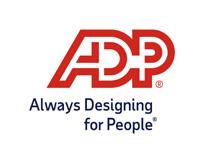
LEARN MORE
THANK YOU PARTNER WITH US
LEARN MORE
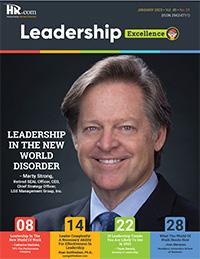
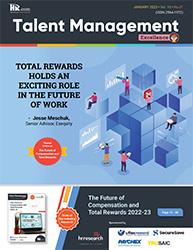
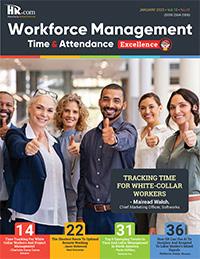
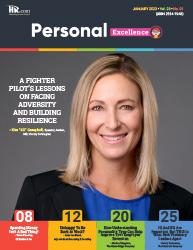

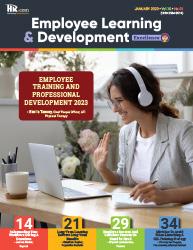
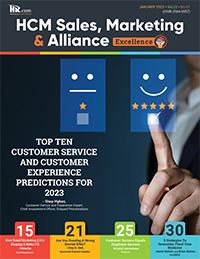
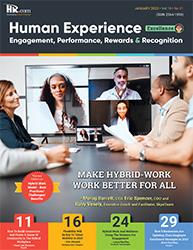

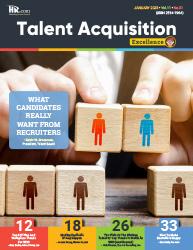


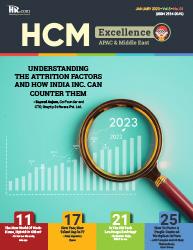
Publications 13 Targeted Publications to Reach Your Audience Informing, Educating, Enlightening and Assisting HR professionals in their personal and professional development, the Excellence series offers high-quality content through the publications! Like to submit an article? Use our online submission form or for more information go to www.hr.com/ExcellencePublications

For more information: Phone: 1.877.472.6648 | Email: ePubeditors@hr.com | www.HR.com/epubs Leadership Excellence March 2023




























 Julie Winkle Giulioni
Julie Winkle Giulioni









 Rensis Likert Professor, Ross School of Business, University of MichiganPartner, The RBL Group
Rensis Likert Professor, Ross School of Business, University of MichiganPartner, The RBL Group






























 Nicole Brock, Chief Consultant, Embed Diversity
Nicole Brock, Chief Consultant, Embed Diversity
































